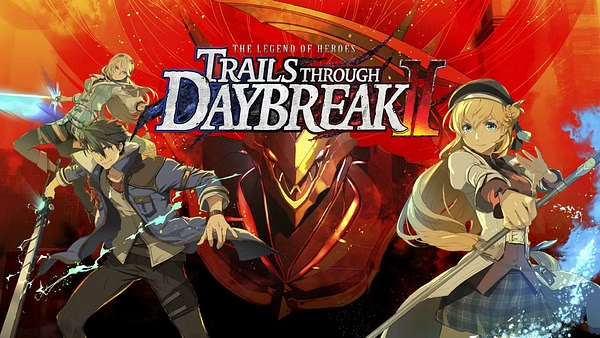The idea of a multiverse frequently appears to fit video games quite easily. For instance, Bioshock Infinite and Ratchet and Clank: Rift Apart have made good use of them to expand their narrative possibilities. However, Legend of Heroes: Trails through Daybreak 2 has joined the multiverse trend with varying degrees of success. Although its plot seems to drag on for hours at a time, it makes up for that momentum with some of the best character development series ever seen. Additionally, Daybreak 2 significantly enhances its hybrid action/turn-based combat, making it more captivating than before. Even if Outcome has pacing issues, it is still a decent follow-up to a fantastic series.
Following your mercenary hero Van Akride and his friend Elaine as they come upon an enigmatic yet recognizable red monster, Daybreak 2 is set soon after the events of the first game. In an amusing turn of events, Van and Elaine are both killed at the end of that first encounter and Agnes, Van’s assistant, mysteriously turns back time in an attempt to save them. The timeline-hopping mechanism is introduced intriguingly with this explosive arrangement. However, Daybreak 2 mostly employs a multiverse as a deus ex machina to allow the party to choose to avoid difficult situations, rather than using its potential for powerful and poignant storytelling, as demonstrated by the superb Zero Escape series.
Because Van keeps dying in different timelines and tries to figure out how to escape his fate—sometimes by going out in ridiculous ways, like stepping into a room full of explosives—the main plot becomes too drawn out over the roughly 60-hour campaign, and the mystery surrounding that crimson monster, unfortunately, takes a backseat. This kind of forced tedium is only made worse by the intermittent usage of time travel, which becomes especially bothersome in Chapter 3 because it causes the story’s flow to feel jagged.
Nevertheless, Daybreak 2 is jam-packed with some of the strongest character development in the series, even when the main plot fails. For instance, Feri, a young and impressionable mercenary, discovers her inner self after being expelled from her family in the last game, while Quatre, the group’s tech geek and researcher, confronts his background and his violent cultish parents. This is the Trails series’ Guardians of the Galaxy Vol. 2: It does not advance the main plot much, but the more intimate, character-driven stories it concentrates on are superb.
Daybreak 2 can control its expanding cast.
Additionally, it controls its expanding cast by promoting a few supporting characters to full party members. Some of the older ones have also been revived, such as Swin and Nadia from Trails into Reverie, whose arcs are deftly resolved here and who at last feel like full characters. Having said that, Daybreak 2 has a relatively similar plot structure to Reverie. The first two chapters are divided into two distinct paths, one of which is led by Van and the other by Swin and Nadia. This is another example of Daybreak 2’s deft handling of its growing cast, and it is a wise one.
Even the Marchen Garten, a rogue-lite dungeon with randomized floors and a boss monster at the conclusion, is a variation of the Reverie Corridor that unites characters from the separate routes. There are several good reasons to enter this dungeon, even if it is entirely optional. Skill points, which enable you to permanently increase the power of your party’s attacks, are the primary prize. It is always refreshing to know that cosmetic items like various outfits can only be obtained in-game in the Marchen Garten, as there are no real-world microtransactions.
Daybreak 2 has extensive side quests, which are a hallmark of the Trails series. Along with helpful prizes like uncommon equipment to aid Van and his buddies on their adventures, they provide an amazing amount of worldbuilding. An intriguing side quest that led to a thorough examination of the multicultural past of Calvard, the nation where Daybreak is set, concerned a corporation that was wondering why its migrant workers were departing for a rival that was paying them more. Eventually, Van and his pals discovered a human trafficking network that was exploiting the migrants, and they demolished it. It demonstrated that despite Van’s more dubious tactics.
It is the minor details.
In a similar vein to Falcom’s sister series Ys, Trails Through Daybreak incorporated real-time action aspects into the series’ conventional turn-based combat. You move on to the far more detailed turn-based part after approaching an enemy in the field and stunning it enough times. If that sounds familiar, it is a system the amazing Metaphor: Just last year, ReFantazio learned a few things. The sequel includes a few new mechanisms to help make the real-time kickoff have a stronger impact, which is nice because Daybreak’s attempt at action felt pretty barebones, even though it was noble to try something new.
First of all, combat is now far more thrilling and swiftly concluded than ever before thanks to the ability to use a potent dual attack known as Ex-Chain between two characters while an enemy is stunned. Avoiding last-minute enemy strikes also allows you to switch characters and execute a strong blow that will paralyze the opponent. These changes to the real-time action make the fighting system feel like the ideal prelude to a main course, even though the turn-based aspects still account for the majority of its depth and size.
Verdict
The multiversal plot of The Legend of Heroes: Trails Through Daybreak 2 has some pace and structural issues, but it is supported by an emphasis on strong character interactions and amazing worldbuilding rather than shocking revelations. Real-time action has received some minor but significant upgrades, while turn-based combat and party customization have not changed much—although they did not need to. Although Daybreak 2 did not have the impact I had hoped for on the Calvard saga as a whole, this more intimate tale is still a solid addition to the Trails series.
